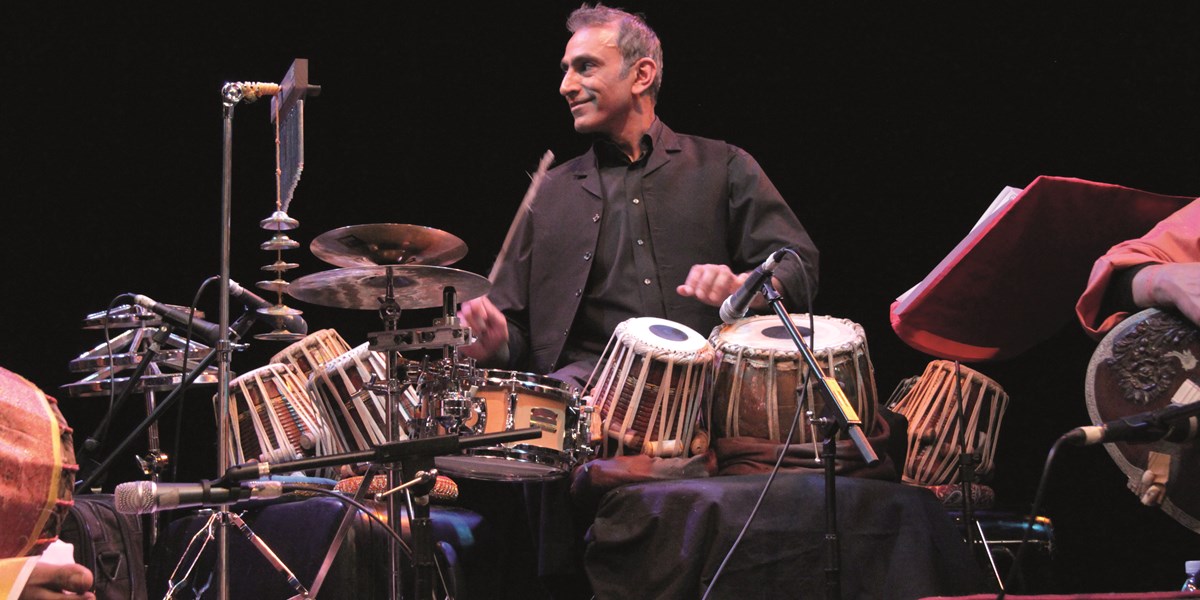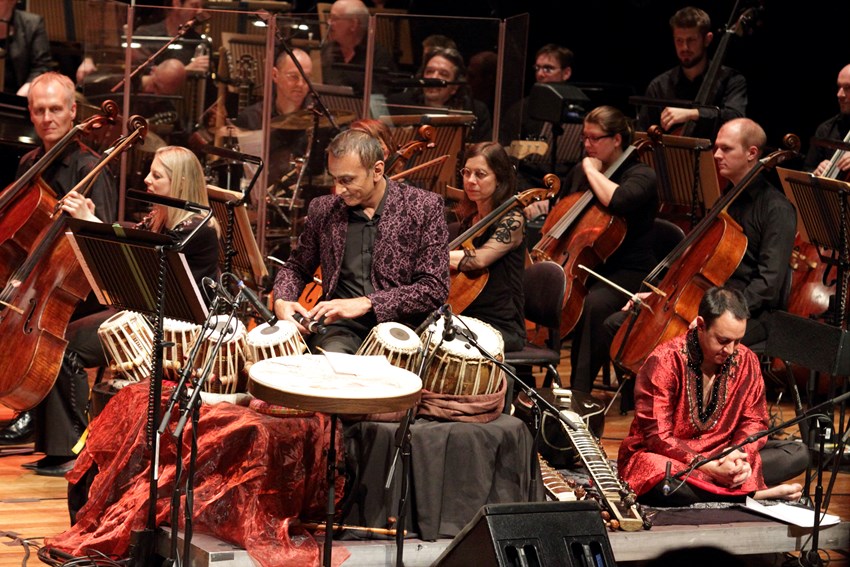Sunday, March 21, 2021
Tabla | Musical Instrument Guide (with Kuljit Bhamra)
Max Reinhardt speaks to Kuljit Bhamra, the go-to musician and composer for UK-Asian West End musicals and film scores, about the instrument that is at the root of his ever-evolving career

Kuljit Bhamra's constantly changing fusion kit (photo by Ammy Phull)
Kuljit Bhamra instantly nailed the mystery of the tabla: “I tell people it’s an Indian bongo. ‘Oh,’ they say, ‘does it sound like a bongo?’ And I say no. The big difference is the black spots in the middle of the drum skin.” Those spots are made of a carbon paste, like slag out of a furnace. If you put them on any drum, it would resonate for longer when struck, because there’s a weight in the middle. The longer sustain allows for the glissando, the drum’s iconic ‘gliding’ sound. The paste spots also generate the distinctive overtones in the timbre of the tabla.
Tabla go back maybe 200 years, really not that old as instruments go. They evolved from a drum called nagara – a bigger drum without the paste. Historians say it was used as a battle drum. The tabla evolved into a two-piece set, one drum pitched higher and the other lower. “Most people wouldn’t say that the sharp, brittle sound of a snare drum is a musical note. But if you play two snare drums tuned differently, in their contrast you can clearly hear the pitches. And on the tabla, the paste accentuates that contrast exponentially. I don’t know how the Indians discovered this and developed such a unique percussion instrument,” Kuljit explains. “But I think it may well be a by-product of the Mughals coming into India, building mausoleums and requiring court music to accompany their celebrations, entertainments, funerals etc. And in that world the tabla became a little like the harpsichord in European royal courts, a unique instrument.”

Kuljit’s immersion in tabla and tala (rhythm) started early. His mother is a singer and from the age of six he accompanied her on the tabla when she sang the hymns in the Sikh temple in Stepney Green. “I could follow my mum very easily because the words fell into a metre or rhythm, so I just knew what cycle to play.”
He’s self-taught, taking an alternative path to the traditional one of studying the instrument with a guru from traditional one of studying the instrument with a guru from childhood: continuously playing and performing, he evolved his own way of learning from the masters, ahead of the present-day YouTube curve. He’d borrow, say, a Ravi Shankar or Alla Rakha CD from his dad’s shelves and record it onto his parents reel-to-reel tape recorder at the highest speed, then slow it down to discover and learn to play the details.
This innovative way of teaching himself has undoubtedly developed his iconoclastic attitude to the Indian music establishment. “I don’t believe that anything has changed in the last 50 years since Sgt Pepper… the playing of Indian music has been frozen in a coffin. There are no more non-Indians playing tabla than there were then. To this day, tabla gurus maintain that you have to be Indian to be able to learn and play, insisting you have to learn to say the tala before you can play it, and those phrases are all in Indian languages, which do not fall easily on a Western palate.”
For a film score Kuljit uses a five-piece tabla kit to meet the demands of the composer. “So I’m actually changing with the chords,” he explains. “My mission is to democratise the playing of Indian music because the sounds are so amazing. While guitars and marimbas have become universal instruments outside their communities, Indian instruments are still confined. The teachers make the theory look really complicated. So I say tabla are Indian bongos – nothing magical or sacred – anyone can have a go. At my concerts I invite the audience to come up and have a play and they do. India has spent too much time mystifying her musical processes and not enough time in disseminating her sublime skills and techniques. The music is great, but it will become greater still when that happens.”
This article originally appeared in the March 2020 issue of Songlines. Never miss an issue – subscribe today!

